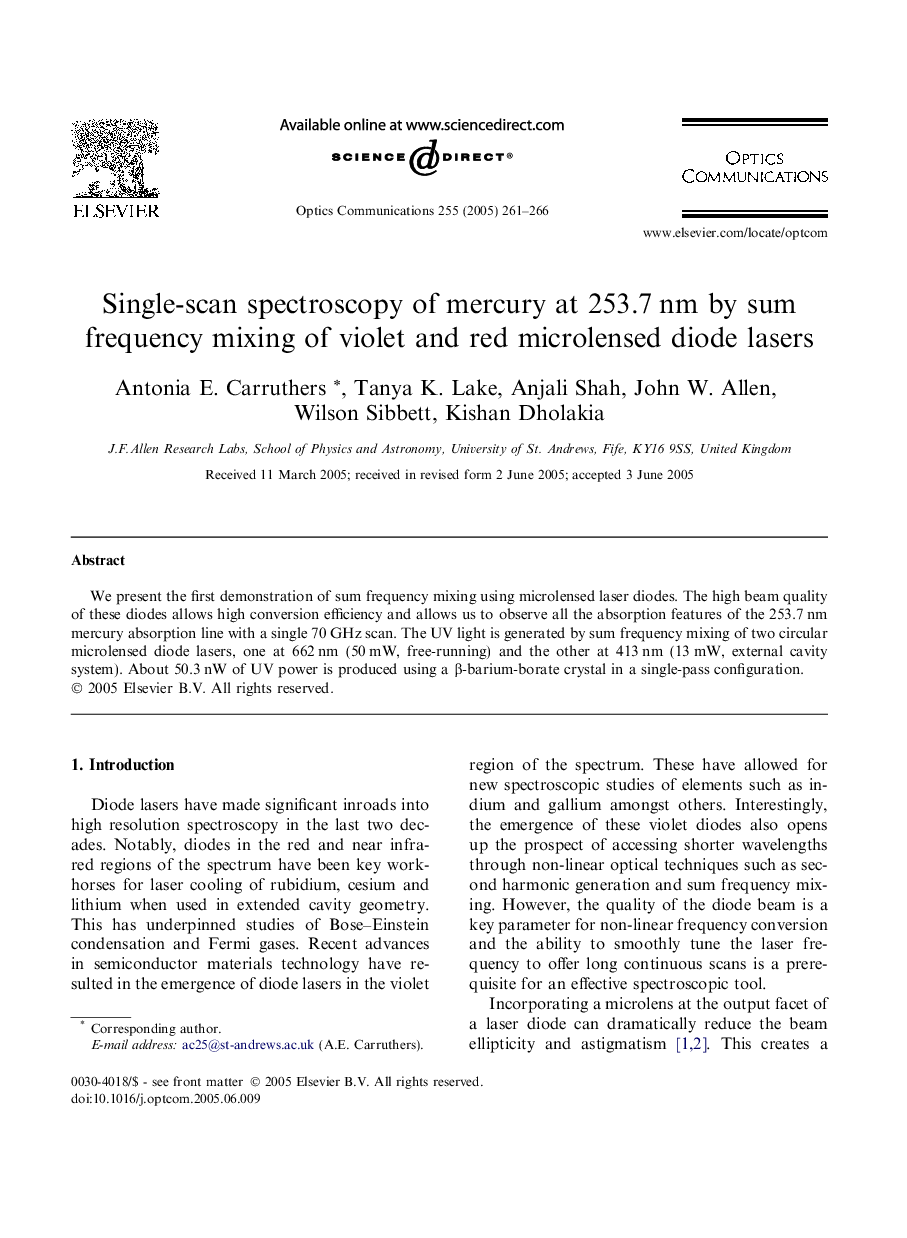| Article ID | Journal | Published Year | Pages | File Type |
|---|---|---|---|---|
| 9785558 | Optics Communications | 2005 | 6 Pages |
Abstract
We present the first demonstration of sum frequency mixing using microlensed laser diodes. The high beam quality of these diodes allows high conversion efficiency and allows us to observe all the absorption features of the 253.7 nm mercury absorption line with a single 70 GHz scan. The UV light is generated by sum frequency mixing of two circular microlensed diode lasers, one at 662 nm (50 mW, free-running) and the other at 413 nm (13 mW, external cavity system). About 50.3 nW of UV power is produced using a β-barium-borate crystal in a single-pass configuration.
Related Topics
Physical Sciences and Engineering
Materials Science
Electronic, Optical and Magnetic Materials
Authors
Antonia E. Carruthers, Tanya K. Lake, Anjali Shah, John W. Allen, Wilson Sibbett, Kishan Dholakia,
